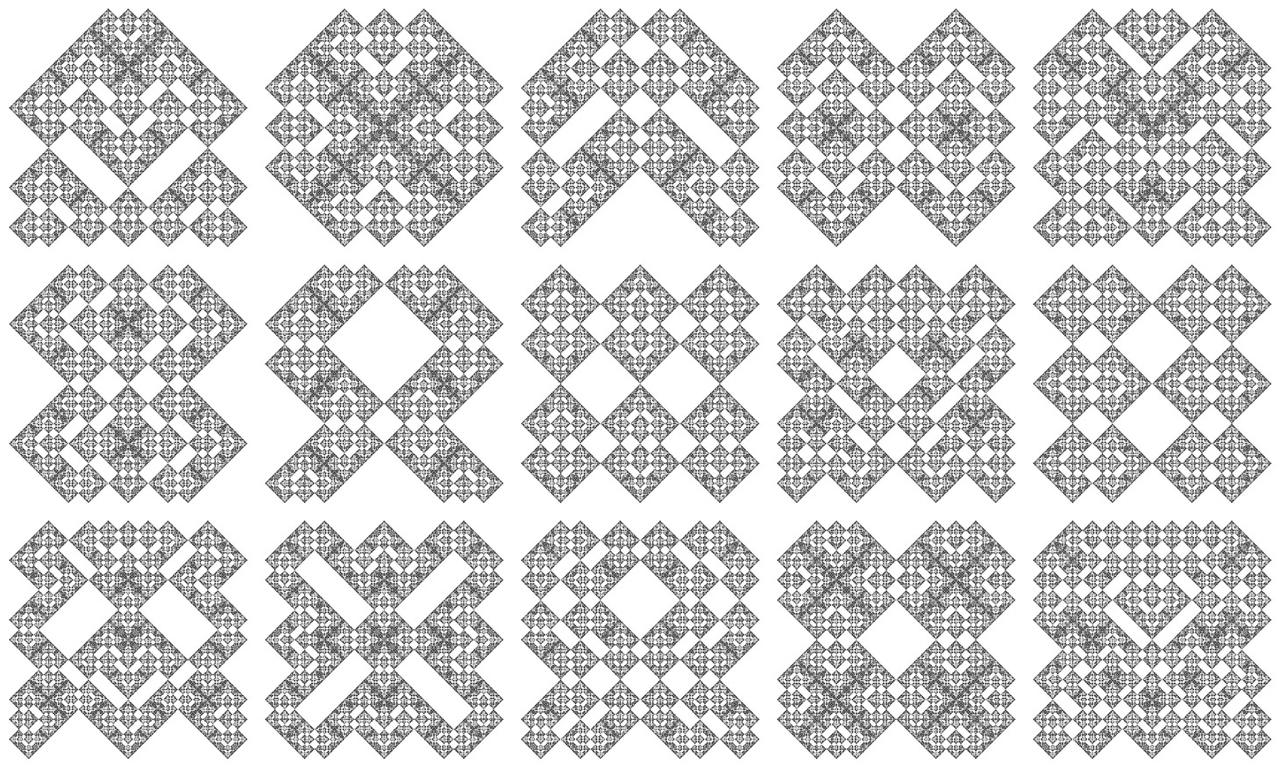Perfect Parity Patterns
When image data is involved, the results can be engrossing even if there are bugs in our code.
- D. E. Knuth, TAOCP Vol. 4A
A parity pattern is a binary matrix where each entry is the xor of its adjacent neighbors (horizontal or vertical). It's called perfect when there's no row or column consisting of entirely zeroes.
We can build bigger parity patterns from smaller ones, which reveals nice fractals when they are plotted as a bitmap.
And we get a bunch of fractals

Patterns
Source:
Exercises 190 & 193, 7.1.3, Donald E. Knuth, The Art of Computer Programming, Vol. 4A